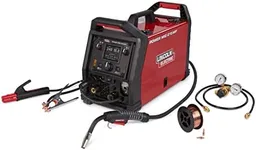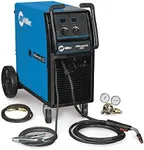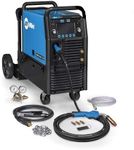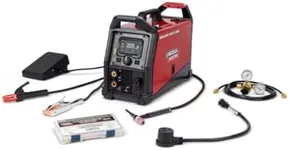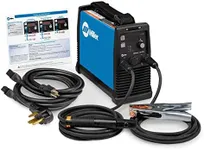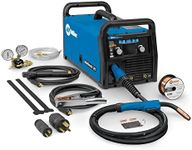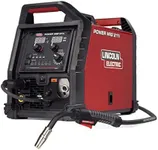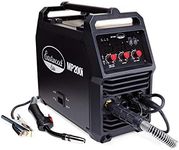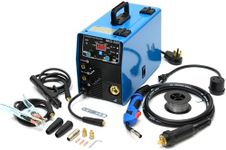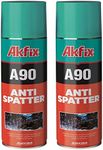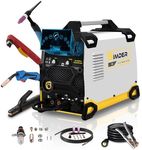Buying Guide for the Best Hobby Welder
Choosing the right welder for your hobby projects can be a bit overwhelming, but with the right information, you can make an informed decision. The key is to understand the different specifications and how they align with your specific needs. Whether you're working on small DIY projects or more complex metalwork, knowing what to look for in a welder will help you pick the best fit for your requirements.Type of WelderThere are several types of welders, including MIG, TIG, Stick, and Flux-Cored. Each type has its own strengths and is suited for different tasks. MIG welders are great for beginners and are versatile for various materials. TIG welders offer precision and are ideal for detailed work on thinner materials. Stick welders are robust and can handle thicker materials and outdoor work. Flux-Cored welders are similar to MIG but are better for outdoor use due to their ability to handle windy conditions. Choose the type based on the materials you plan to work with and the level of precision you need.
Amperage RangeAmperage determines the thickness of the material you can weld. Lower amperage (20-100 amps) is suitable for thin materials like sheet metal, while higher amperage (100-200+ amps) is needed for thicker materials. If you plan to work on a variety of projects, a welder with a wide amperage range will offer more flexibility. Consider the thickness of the materials you will most frequently work with to determine the appropriate amperage range for your welder.
Duty CycleThe duty cycle indicates how long a welder can operate continuously before needing to cool down. It is usually expressed as a percentage over a 10-minute period. For example, a 20% duty cycle at 150 amps means the welder can run for 2 minutes at 150 amps before needing an 8-minute rest. For hobbyists, a lower duty cycle may be sufficient, but if you plan on longer welding sessions, look for a welder with a higher duty cycle to avoid frequent interruptions.
Input PowerWelders can run on different power inputs, typically 110/120V or 220/240V. 110/120V welders are suitable for light-duty work and can be plugged into standard household outlets. 220/240V welders are more powerful and are needed for heavier-duty tasks. Consider the power availability in your workspace and the type of projects you will be undertaking. If you need more power and have access to a 220/240V outlet, a higher voltage welder may be the better choice.
PortabilityPortability is an important factor if you need to move your welder around frequently. Lighter, more compact welders are easier to transport and store, making them ideal for hobbyists with limited space or those who work in different locations. However, portable welders may have lower power and fewer features compared to larger, stationary models. Assess your workspace and how often you will need to move the welder to determine the right balance between portability and functionality.
Ease of UseFor hobbyists, ease of use is crucial. Look for welders with user-friendly controls, clear displays, and straightforward setup processes. Some welders come with features like automatic settings adjustments, which can simplify the welding process for beginners. If you're new to welding, a welder with intuitive controls and helpful features can make learning and executing your projects much easier and more enjoyable.
